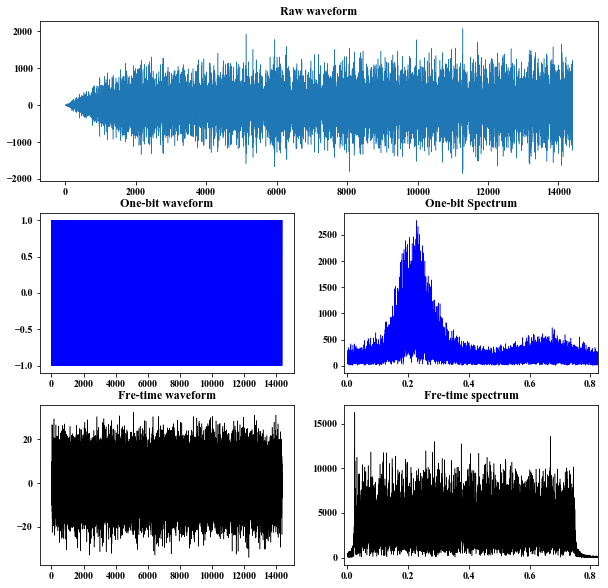Cross-correlations From Seismic Ambient Noise
Contents
New responses between station pairs can be extracted from diffuse wave field by cross-correlating ambient seismic noise or coda (Campillo & Paul, 2003; Bensen et al., 2007). However, some processing techniques should be taken into consideration to retrieve clear emperical green’s functions (EGFs). Here we show these steps in detail.
$\boxed{\text{Data processing steps}}$
1. Cut data
2. Removing mean, trend and tapering
3. Removing instrument response
4. Band-pass filtering
5. Temperal normalization
$\boxed{\text{One-bit}}$
$$
\tilde{d_j}=sign(d_j) \tag{1}
$$
$\boxed{\text{run absolute mean}}$
$$
\begin{aligned}
w_j &= \frac{1}{2N+1}\sum_{n=j-N}^{j+N}|d_n| \\
\tilde{d_j} &= \frac{d_j}{w_j}
\end{aligned} \tag{2}.
$$
6. Spectral whitening
Using $\text{run absolute mean}$ algorithm.
$$
\begin{aligned}
w_j &= \frac{1}{2N+1}|fd_j| \\
\tilde{fd_j} &= \frac{fd_j}{w_j}
\end{aligned} \tag{3}.
$$
Combining steps $5$ and $6$, an improved algrithm suggested by Shen et al. (2012) is given by $$ y(t) = \sum_{f_k=f_1}^{f_2}\frac{x_{f_k, f_k+\Delta f}(t)}{Env[x_{f_k,f_k+\Delta f}(t)]} \tag{4}, $$ where, in general, $\Delta f = \frac{f_1}{4}$ and $Env[x_{f_k, f_k+\Delta f}]$ is the envelope of $x_{f_k, f_k+\Delta f}(t)$.
|
|

7. Computing cross-correlation time functions.
$$ C_{12}(t) = \int_{-\infty}^{\infty}u_1(\tau+t)u_2(\tau)d\tau \tag{5}. $$ Stacking all cross-correlations to get EGFs, $$ EGF(t) = \frac{1}{N}\sum_{n=1}^{N}C_n(t) \tag{6}. $$
References
Bensen, G. D. , Ritzwoller, M. H. , Barmin, M. P. , Levshin, A. L. , Lin, F. , & Moschetti, M. P. , et al. (0). Processing seismic ambient noise data to obtain reliable broad‐band surface wave dispersion measurements. Geophysical Journal International(3), 3.
Campillo, M. , & Paul, A. . (2003). Long-range correlations in the diffuse seismic coda. ence, 299(5606), 547-549.
Shen, Y. , Ren, Y. , Gao, H. , & Savage, B. . (2012). An improved method to extract very-broadband empirical green’s functions from ambient seismic noise. Bulletin of the Ssmological Society of America, 102(4), 1872-1877.
Author Geophydog
LastMod 2020-09-08
